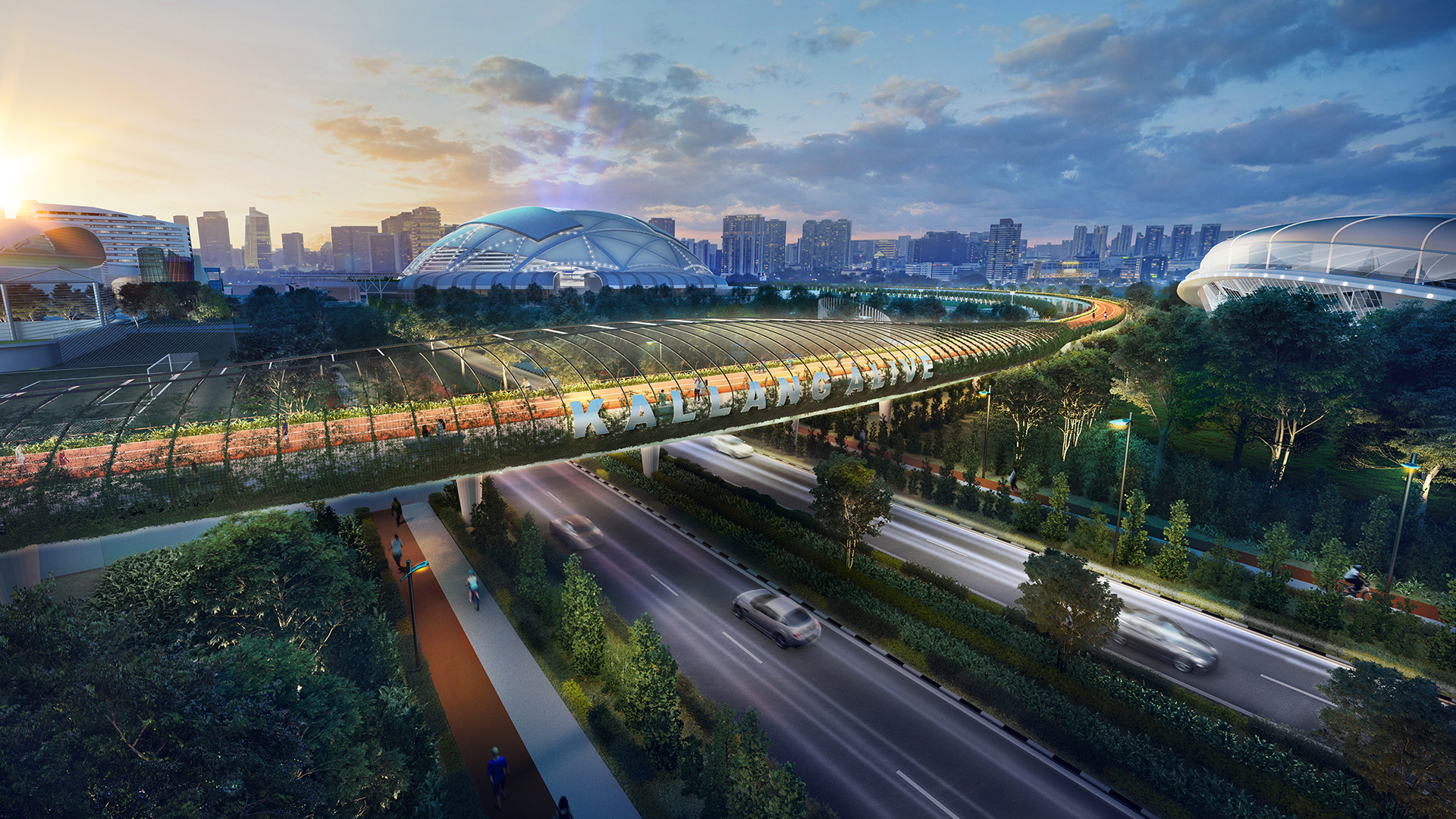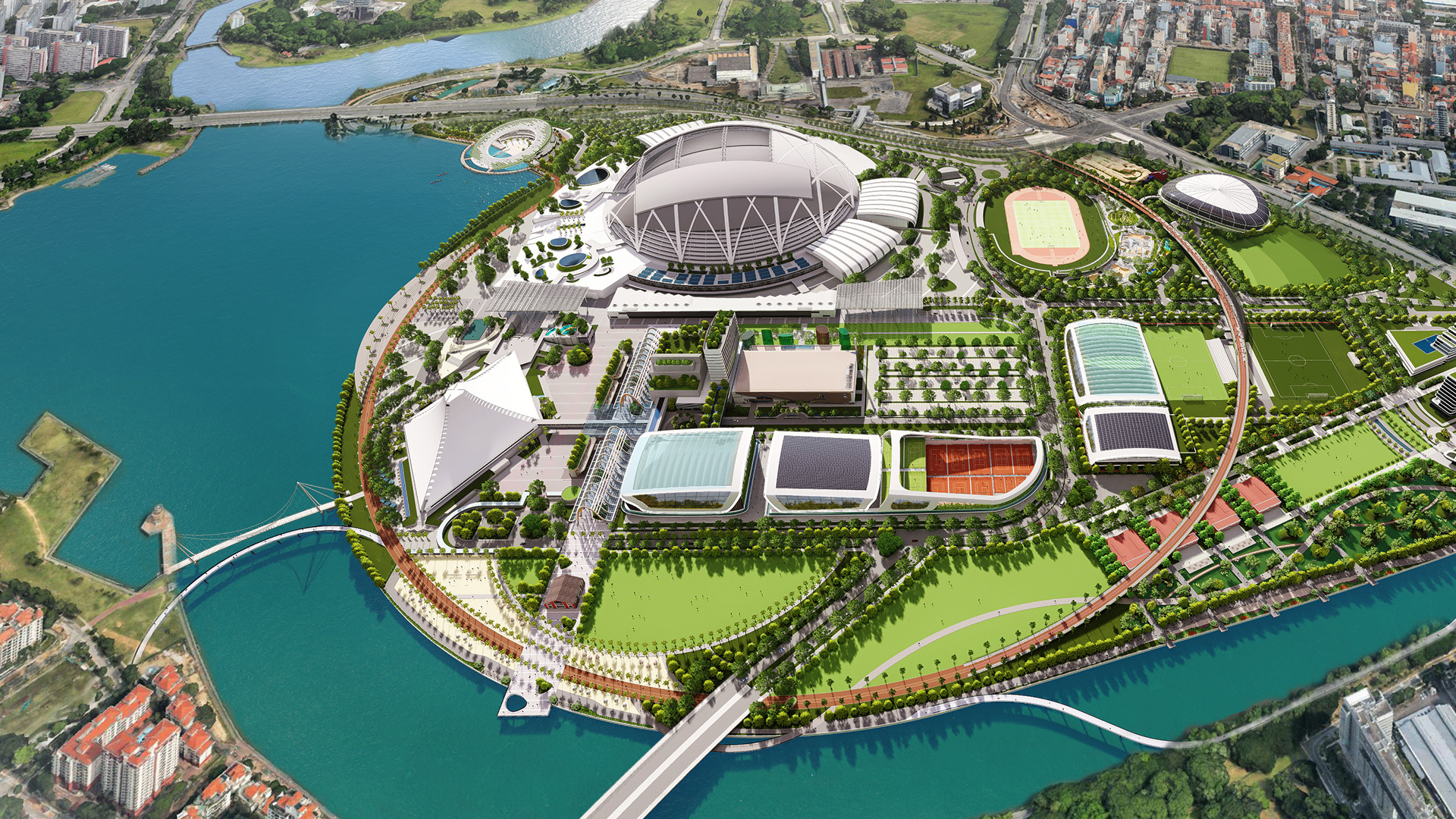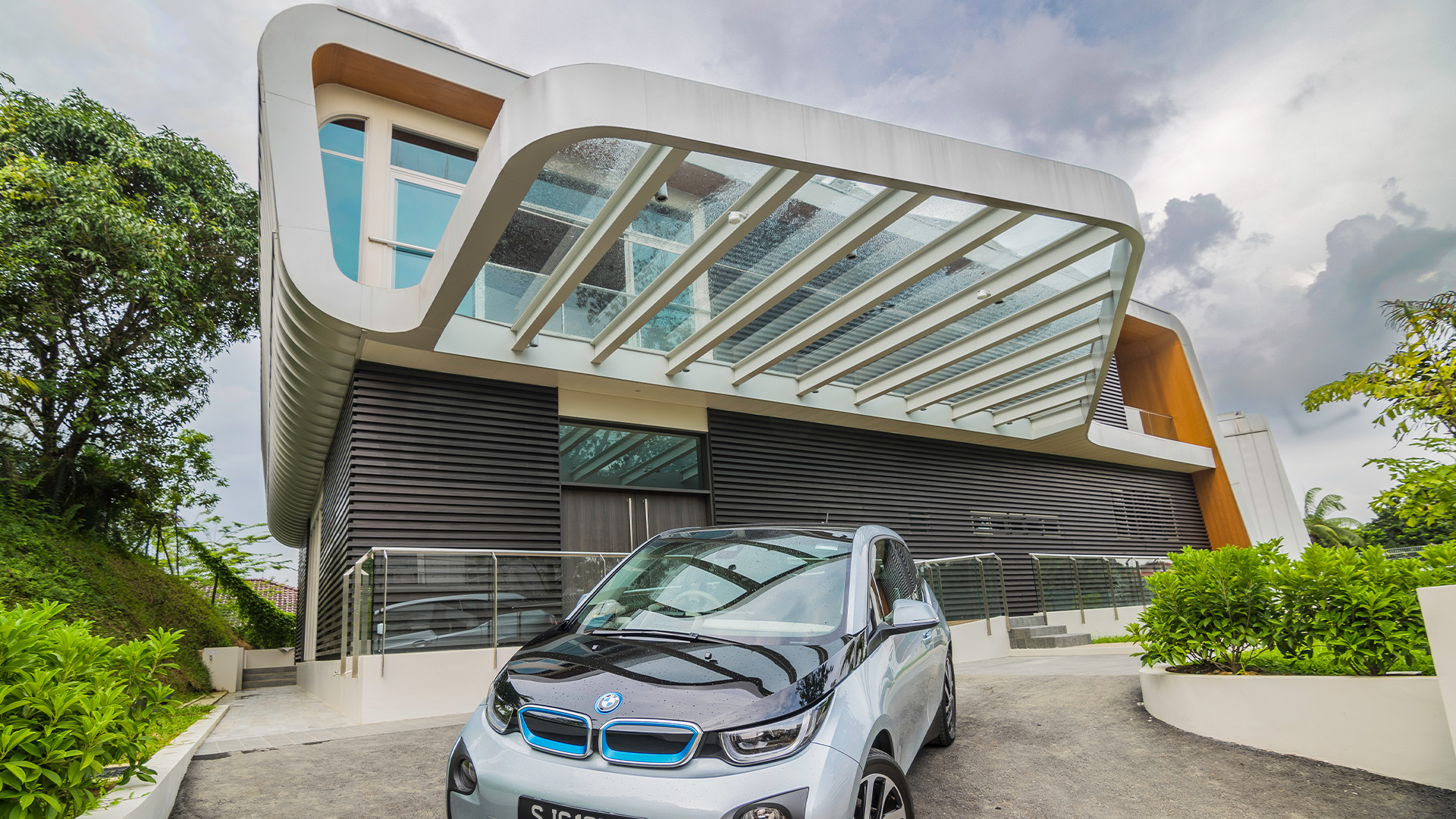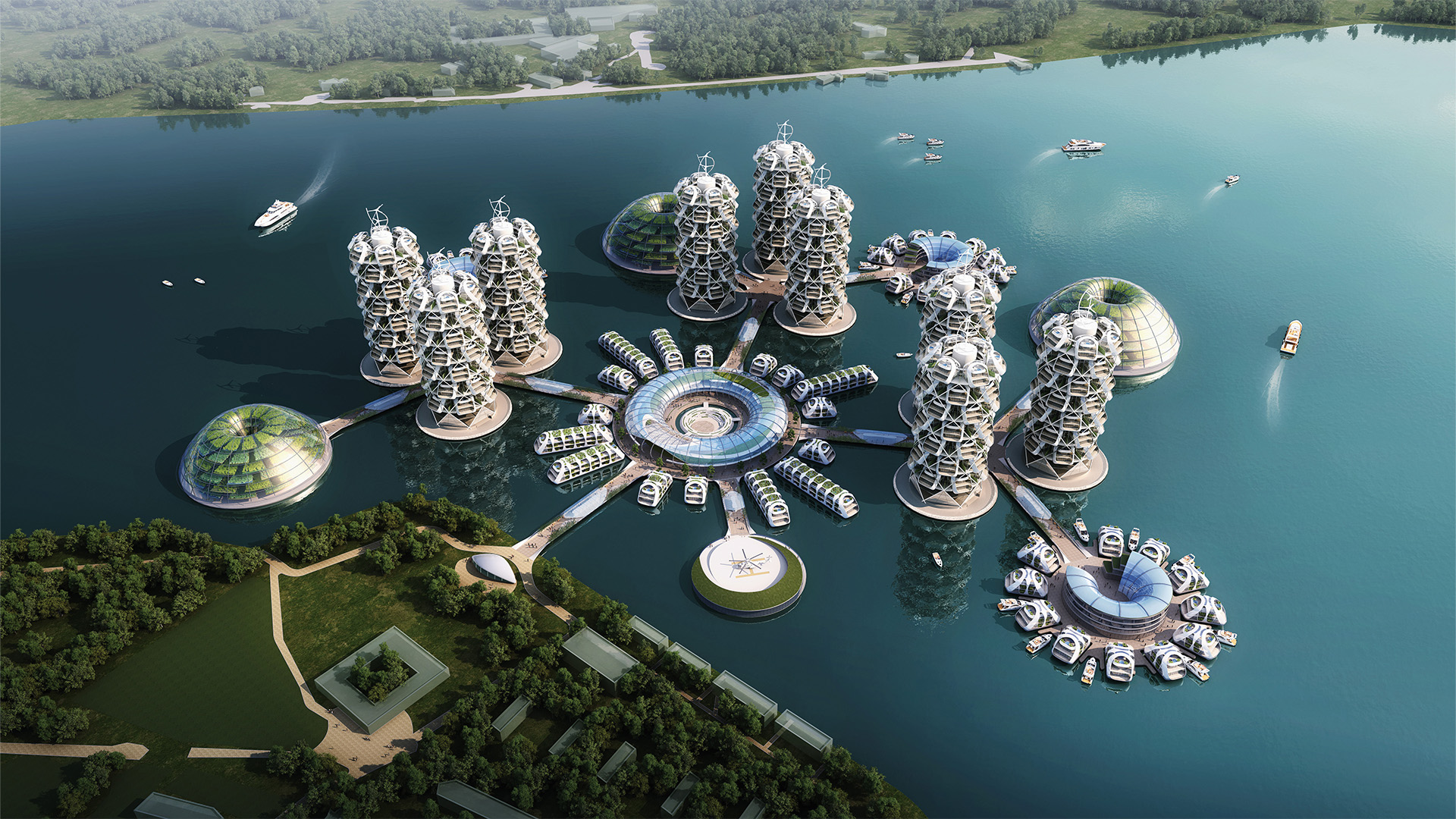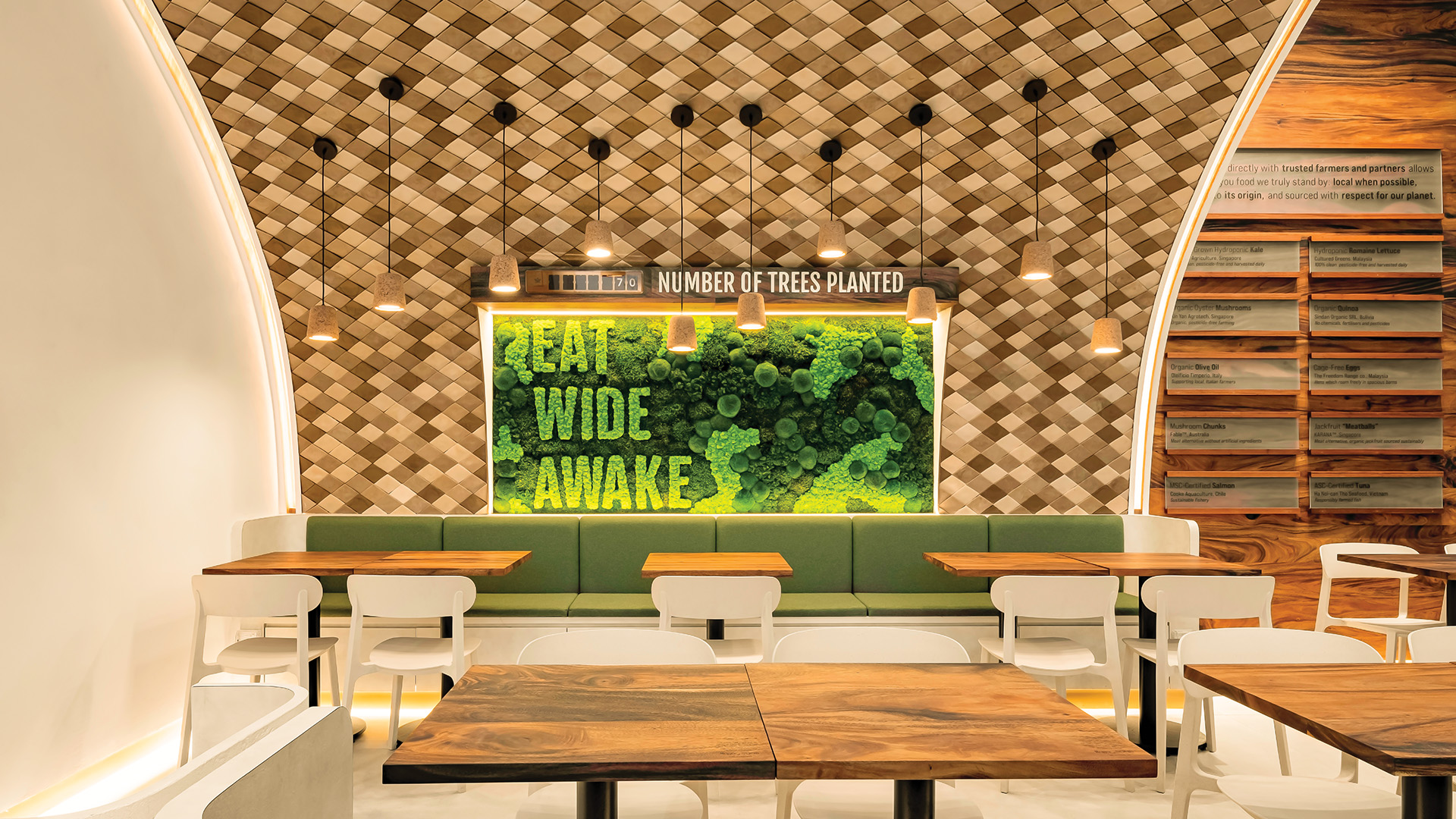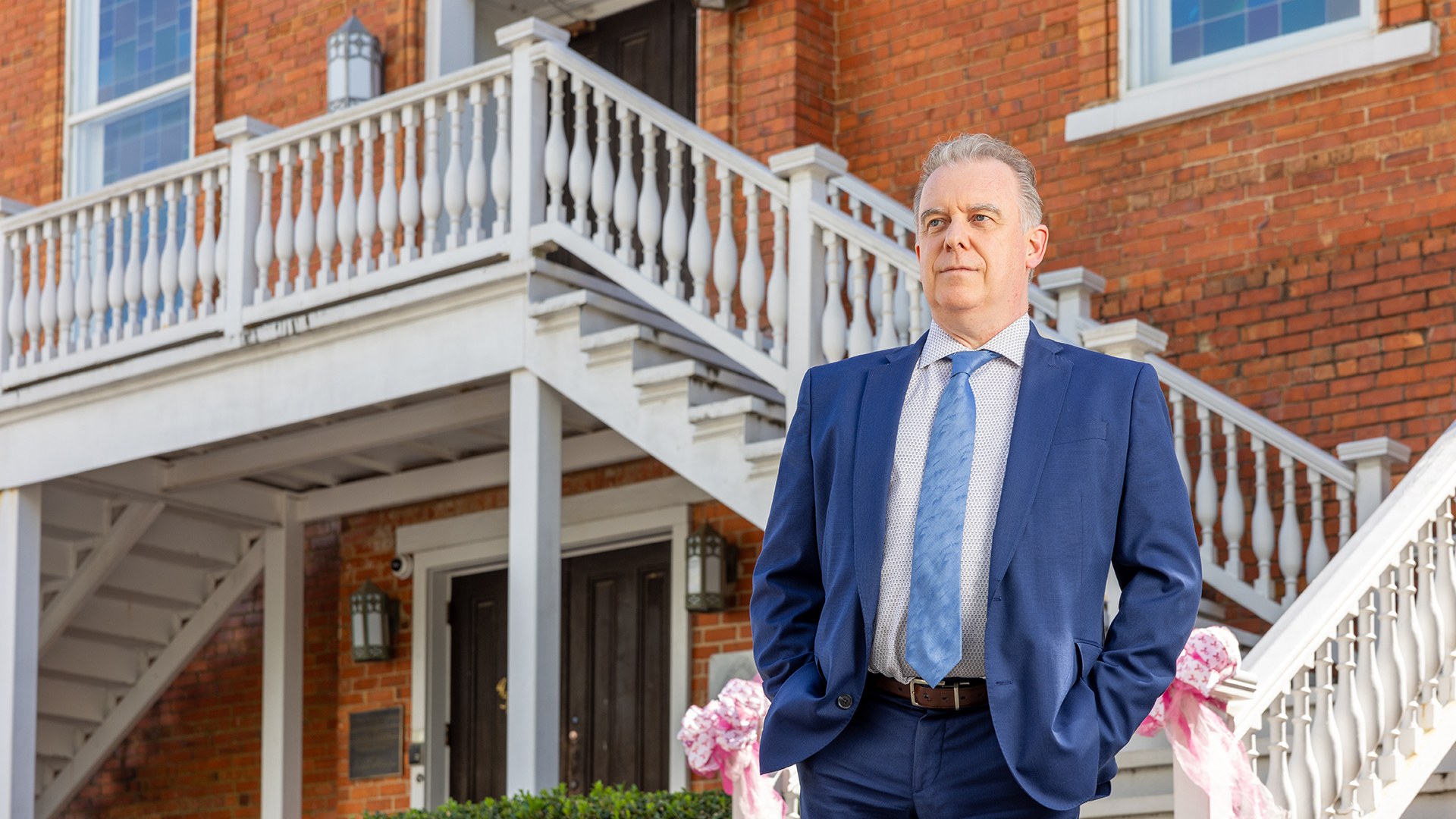
Sustainability is a tenet of contemporary urban design, but few built environment professionals have dedicated themselves to the principle so zealously as Jason Pomeroy MRICS.
It was what motivated the architect, academic and TV presenter to leave the UK 12 years ago and set up his own studio and research academy in Singapore. “There comes a point when you think: ‘Am I doing the right thing? Am I pushing the needle far enough? If I want to be passionate about sustainability, I need to be unfettered in this regard’,” he says.
He laments the property sector’s slow progress in getting to grips with the climate crisis. “I get very upset by the state of affairs right now. There is this immense weight and pressure. We need to stop talking about net zero. We are already far past that. We need to be talking about carbon negative, super-active solutions.”
Pomeroy Studio employs an approach that he calls “evidence-based interdisciplinary, sustainable design.” It is not just an architecture firm, he says: “We are underpinned by researchers from different fields including modular construction, vertical urban theory, culture, and conservation. Our deep green process is what eventually gives us a product that is, I would like to think, as sustainable as it can be.”
Born in London to a British father and Malaysian Chinese mother, his interest in architecture was sparked by a childhood visit to St Paul’s with his father. The pair held a memorable conversation in the famous Whispering Gallery of Christopher Wren’s cathedral, where sound travels along the curved surface of the dome allowing a whisper on one side to be heard on the other. Pomeroy credits the experience with planting the seed of what would later grow into his interdisciplinary philosophy. “Christopher Wren, Astronomer Royal, surveyor to the king, architect, mathematician, was a multi-disciplinarian who was able to interact with other people to create this beauty, these visions.”
He enjoyed his undergraduate studies at Canterbury School of Architecture, but he was disappointed by their narrow scope. “I wanted to know, what do the contractor, the quantity surveyor, the structural engineer do?” A masters’ degree in Cambridge focused on researching interdisciplinary design brought him into contact with another famous Wren building. The university library, an early example of design that aims to optimise natural light, inspired him to embark on a “journey of frugality,” which he defines as “a quest to do as much as possible with as little as possible.”
Complementary career paths
It was in Cambridge, he recalls, that his career split into two parallel paths: interdisciplinary design, and a passion for academic research in the field of sustainability. The former led him to take up roles at architectural practices YRM and Twigg Brown, followed by a stint at Japanese developer-contractor Kojima, and then a directorship at Broadway Malyan, which included setting up the architecture firm’s Singapore office.
Meanwhile, his continued research into sustainability included a PhD at the University of Westminster and a book on greening the urban environment through the creation of sky courts and sky gardens.
When Pomeroy decided to start his own design studio in 2012, a combination of factors drew him to locate it in Singapore. Childhood summers had been spent in Malaysia, which had always been a second home to him. “There is something quite magical about the Southeast Asian traditions, the family orientation, the climate and culture” he says. Besides, the region’s dense urban environments provided a “natural home” to put into practice his ideas on urban greening
Pomeroy’s research argues that creating green social spaces in the sky has benefits for carbon sequestration, water retention, and reduction in ambient temperatures. “I am a big fan of Lego – it’s a modular kit of parts you can expand and contract. Why don’t we do that that with greenery? One square metre of turf, palm, shrub or tree all have an economic cost, but they also have an environmental, social and cultural value. It brings a new conversation to the metrics of urban greenery.”
Pomeroy is proud to have collaborated with the Singapore government to help shape its guidelines on green urban design. “I wanted to ensure that the research and book would find an outlet, not just within a company, but within an environment and Singapore turned out to be that place. It’s good to think that those notions of frugality and greening would eventually become legitimised, not just in text that I wrote, but the text that the government is applying, so that other designers can do the right thing.”
Carbon negative design
One of the studio’s early projects was the creation of the B House in Singapore. Completed in 2015, it was Asia’s first carbon negative home, with a design based on the architecture of colonial bungalows, that generates more energy than it consumes. Another low-carbon exemplar designed by the firm is the interior of SaladStop’s outlet at the CapitaSpring development in Singapore. It was the first food and beverage store certified net zero across Southeast Asia, and features wall tiles made from reconstituted plastic waste harvested from the ocean.
A further notable project is the studio’s masterplan for Singapore’s Kallang Alive district. The 89-hectare mixed-use scheme is anchored by the Singapore Sports Hub and other sports and entertainment venues. It will boast an elevated circular walking and cycling loop, tracing the original circular runway of the former Kallang Airport, that utilises kinetic energy pads on its floor to turn footfall into a source of sustainable power.
But he notes that is very challenging for developers to create bold new schemes in the current business environment. Increased borrowing costs and inflation, already a serious problem, will be further exacerbated by the ongoing conflicts in Ukraine and Gaza, he believes, leading to “a continued winter of private sector development” in which entrepreneurialism is stifled and small developers are prone to be swallowed up by larger conglomerates. A potential silver lining to the cloud is that the impetus to reduce material and utility costs could lead to a “re-burgeoning of frugality,” however.
Pomeroy argues that to address climate change, governments will need to wield a regulatory “big stick” and enforce drastic action. Doing so may push big corporations to engage with the agenda to try to gain an early mover advantage.
Initially a sceptic about the usefulness of technology in addressing the crisis, he is now a partial convert. Pomeroy Academy’s research on behalf of the Slovakian government, which is seeking to develop a national digital twin, has convinced him that “technology has an incredible role in identifying what people are consuming, providing the data that will allow them to make informed decisions. For every single product, I should be able to know what the carbon footprint is,” he says.
“I wanted to know, what do the contractor, the quantity surveyor, the structural engineer do?” Jason Pomeroy MRICS, Pomeroy Studio
Radical solutions needed
Climate-driven migration will increase as large areas become uninhabitable and are left deserted, he predicts, creating increased urban congestion. Radical carbon-negative design solutions will be required, among them making greater use of the majority of the Earth’s surface that is covered by water as habitable space. His research suggests creating floating communities of self-contained pods, powered by renewable energy, which instead of flooding will simply rise with the tide as sea levels increase. “Disused docks and ports are cooler, and they provide a platform for urban regeneration,” he says.
The built environment sector must discard its silo mentality and pull together if it is to craft a meaningful response to environmental change, argues Pomeroy, and must also “look over the fence” to borrow ideas from other industries. He qualified for RICS membership in 2014 in part because it provides a greater connection to other disciplines within the built environment industry. “Secondly, it provides a consciousness to be able to manage not just design but cost and project parameters. And thirdly, a respect for an institution that has been able to diversify and embrace multiple sources of quantification and measurement that are crucial in forging better built environments.”
“RICS membership provides a greater connection to other disciplines within the built environment industry” Jason Pomeroy MRICS, Pomeroy Studio
As well as collaborating more enthusiastically, built environment professionals must distil useful lessons from the past to design for the present, he suggests. “Then it is important for us to disseminate that knowledge for future generations because they can then learn from us. Design, distil and disseminate is a key message.”
It is difficult to remain optimistic in the face of the trials that lie ahead, and Pomeroy admits to sometimes feeling angry over climate inaction within some sections of the property industry. “More people have to take a stand,” he says. “I hope that, somehow, we will manage to put the lid back on Pandora’s box. It will take a cultural step change to do so.
“My children are eight and 11 years old. My hope is that their generation is naturally conscientious about the environment. But by the time they get to my age and can make a difference, what extent of climate cataclysm will we have experienced?”
Global Sustainability Conference
Shaping a sustainable future: The built and natural environment’s journey
5 December | 12:00 - 22:00 GST | Online
7.5 Hours Formal CPD
Join us for a day dedicated to exploring cutting-edge trends and innovations in sustainability across built and natural environments. Hear from global experts who will share valuable insights on the impact of these developments worldwide. Engage in transformative discussions and practical sessions designed to inspire progress and make a meaningful impact on global sustainability.
Don’t miss out - secure your spot now


